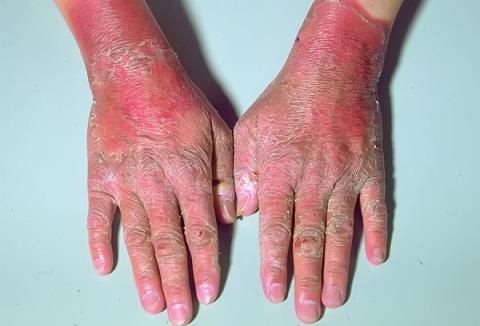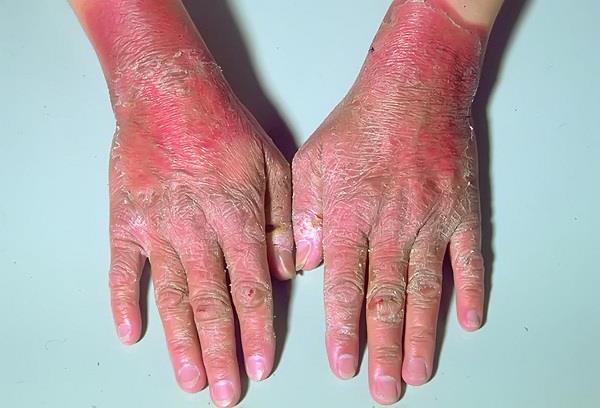Pellagra Disease – Symptoms, Causes, and Treatment of Vitamin B3 Deficiency

Pellagra is a disease associated with a deficiency of vitamin B3, or niacin. This disease is quite common in developing countries. What are the symptoms of Pellagra? What causes the disease? How dangerous is this disease? Let Dr. Nguyen Thi Thao answer your frequently asked questions about Pellagra.
Pellagra is a serious condition that can lead to severe health complications if left untreated. Below, we’ll explore everything you need to know about Pellagra, including its symptoms, causes, and treatment options.
- 1. Pellagra Disease – Vitamin B3 Deficiency
- 2. How Does Pellagra Disease Manifest?
- 3. What Causes Pellagra?
- 4. Diagnostic Methods
- 5. How Is Pellagra Treated?
1. Pellagra Disease – Vitamin B3 Deficiency
Pellagra is a disease caused by a deficiency of vitamin B3 (vitamin PP), or niacin. Characteristic conditions include dementia, diarrhea, and dermatitis. This disease is treatable. However, it is quite dangerous, and if left untreated, it can be fatal.
Historically, Pellagra was more common due to poor nutrition. Today, with improved dietary practices, the disease is less prevalent. However, it remains a significant health issue in developing countries where malnutrition is still a concern.
2. How Does Pellagra Disease Manifest?
The main symptoms of Pellagra are dermatitis, dementia, and diarrhea. These symptoms arise due to the effects of niacin deficiency. Cells in the digestive system and skin have a faster rate of replacing dead cells, so the need for vitamin B3 is higher. Therefore, when the body is deficient in niacin, symptoms in these organs appear first.
2.1 Symptoms in the Skin
Inflammation of the skin caused by Pellagra manifests as a rash on the face, lips, feet, and hands. In some cases, dermatitis appears around the neck, creating the "Casal necklace" symptom.
Skin lesions around the neck in the form of “Casal chains”
Other manifestations of dermatitis may include:
- Red, scaly skin.
- Areas of color variation, usually from red to brown.
- Thick, brittle, flaky, or cracked skin.
- Itchy, burning skin.

Skin manifestations of Pellagra on the hands
2.2 Neurological Symptoms
In some cases, the neurological symptoms of Pellagra appear first. However, because these symptoms are subtle, it may take time for patients or their loved ones to recognize them. As the disease progresses, symptoms of dementia can include:
- Insensitivity.
- Depression.
- Feelings of confusion, irritability, and mood changes.
- Headache.
- Feelings of restlessness and anxiety.
- Disorientation and paranoia.
2.3 Other Manifestations
In addition to the above symptoms, Pellagra can include:
- Pain in the lips, tongue, or gums.
- Anorexia or a feeling of not eating well.
- Difficulty eating.
- Nausea.
3. What Causes Pellagra?
Pellagra is divided into two main types based on its causes:
- Primary Pellagra.
- Secondary Pellagra.
3.1 Primary Pellagra
Primary Pellagra is caused by a diet lacking in niacin or tryptophan. Tryptophan is an amino acid that can be converted into niacin in the body. A diet deficient in tryptophan can lead to Pellagra.
This type of Pellagra is common in developing countries where malnutrition is prevalent. A lack of access to nutritious food can result in essential vitamin deficiencies, leading to the disease.

Primary Pellagra is common in developing countries, where food is scarce
3.2 Secondary Pellagra
Secondary Pellagra occurs when the body cannot absorb niacin despite an adequate dietary intake. Conditions that can cause this malabsorption include:
- Alcoholism.
- Eating disorders.
- Certain medications, such as antiepileptic drugs and immunosuppressants.
- Gastrointestinal diseases, such as Crohn's disease or ulcerative colitis.
- Cirrhosis.
- Melanoma.
- Hartnup disease (an inherited metabolic disorder).

Certain medical conditions, such as gastrointestinal disease, can prevent vitamin B3 absorption
4. Diagnostic Methods
Diagnosing Pellagra can be challenging due to its varied symptoms. There is no single test to confirm a niacin deficiency. Doctors typically rely on gastrointestinal symptoms, skin rashes, or neurological disorders to make a diagnosis.
Additional tests, such as urinalysis, may be conducted. In practice, a presumptive diagnosis is often made based on the patient’s response to niacin supplementation.
5. How Is Pellagra Treated?
Treatment for primary Pellagra involves increasing niacin intake through diet or supplements. Vitamin supplements can also be administered intravenously in severe cases.
If treated early, patients typically recover within a few days. Skin inflammation may take several months to improve. However, untreated Pellagra can be fatal within four to five years.

Vitamin B3 is often found in animal meat, nuts, and dark green vegetables
5.1 Treating Secondary Pellagra
Treatment for secondary Pellagra focuses on addressing the underlying condition causing niacin malabsorption. Combining this with niacin supplementation can be effective in managing the disease.
For skin lesions, patients are advised to keep the affected areas moisturized and use sunscreen to protect against further damage.
Pellagra is a serious disease caused by a deficiency of vitamin B3 or niacin. It can result from poor nutrition or conditions that impair niacin absorption. Early diagnosis and treatment are crucial to prevent severe complications. Always maintain a healthy diet to ensure adequate vitamin intake. SignsSymptomsList wishes you good health and well-being.